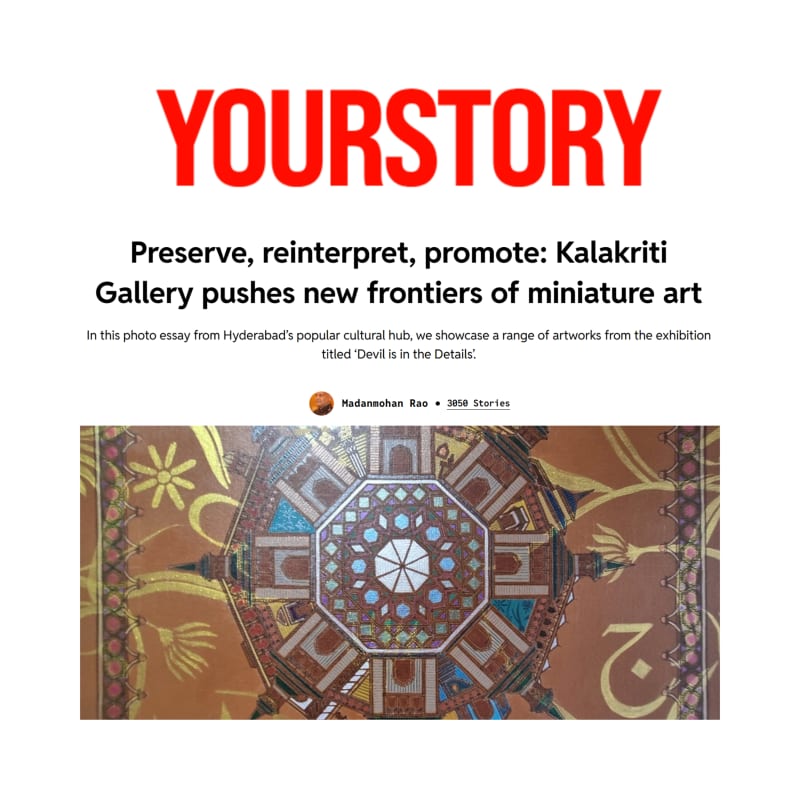This month, Kalakriti Art Gallery is hosting an exhibition on miniature works titled Devil is in the Details, curated by Supriya Lahoti Gandhi and Jayesh Mathur.
Supriya Lahoti Gandhi graduated from University of London and University of Exeter, and has previously served as a consultant at India’s Ministry of Culture, Government of India. She is the founder of concept design studio Creatif and The Gallery Café.
Jayesh Mathur, also a graduate of University of London, is an in independent scholar and researcher. He has contributed to numerous publications, and is advising auctions houses and collectors on classical Indian art.
“Indian art has traditionally manifested itself not only through magnificent architectural wonders, wall murals, and sculpture but also in the nuanced intricacies of miniature paintings,” Gandhi explains in the curatorial notes.
The symbolism in the miniatures reflects new levels of ingenuity and creative consciousness. “Over the centuries, this tradition has seen numerous regional styles and variations, yet a shared commitment to meticulous detail remains at the heart of the genre,” Mathur adds.
“These small-sized works were traditionally intended for viewing while being held in the hand, rather than being displayed in a frame on the wall as we do today. Holding these pieces allowed for an inmate, tactile connection between the viewer and the artwork,” he observes.
Established in 2002, Kalakri Art Gallery showcases emerging and established artists in traditional and contemporary art forms. It has also brought a range of international artists to Hyderabad.
Other activities at the gallery include workshops, art camps, and events that engage the creative community. The gallery is also at the helm of major public art installations in Hyderabad, such as the IKEA India Underpass Mosaic Mural project and I LOVE HYDERABAD installation.
The paintings in the current exhibition capture musical moods as well as the grandeur of epics, as shown in this photo essay. A range of contemporary artists has reinterpreted the legacy of miniatures across media types: textile, metal, papercut, and paintings.
Such a dialogue creates new dimensions of visual language and forms. “These works do not merely reference the miniature – they question, expand, and translate its language for a modern context,” Gandhi signs off.
Now what have you done today to pause in your busy schedule and harness your creative side for a better world?

